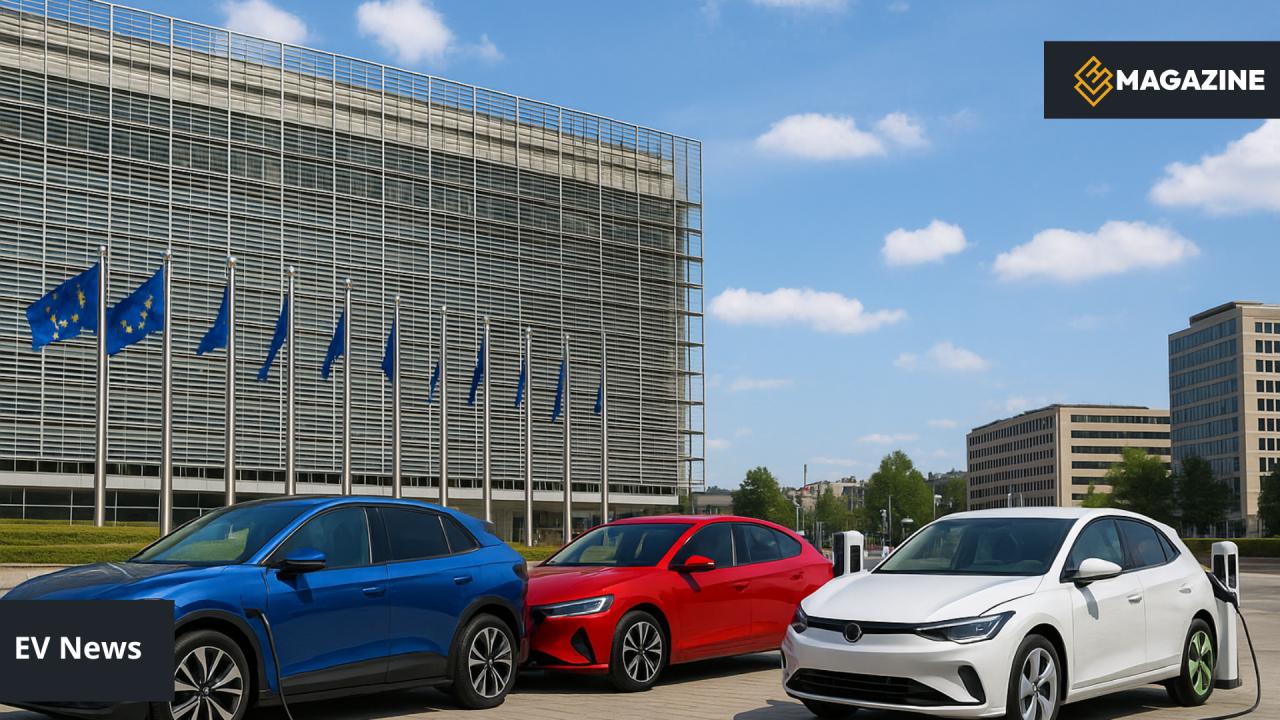15%
€250bn
15%
13.2M
Industry Leaders Sound Alarm: Current EU Strategy "No Longer Feasible"
In a joint letter addressed to European Commission President Ursula von der Leyen, top executives from Europe's automotive industry have issued an unprecedented warning about the viability of current EU green mobility targets. The message is clear: without immediate course correction, the transition to zero-emission vehicles faces catastrophic failure.
We are being asked to transform with our hands tied behind our backs. Meeting the rigid car and van CO2 targets for 2030 and 2035 is, in today's world, simply no longer feasible.
Market Reality vs. Policy Ambitions: The Growing Gap
Industry Assessment: The continuous trend of a stagnating market share of battery electric cars sends an extremely worrying signal for industry and policy makers.
The Perfect Storm of Challenges
European manufacturers face near-total dependency on Asia for the battery value chain, creating strategic vulnerabilities. Meanwhile, the US imposes a crushing 15% tariff on EU vehicle exports, further constraining market opportunities during the critical transition period.
Europe remains almost entirely reliant on Asian suppliers for critical battery components, leaving manufacturers vulnerable to supply chain disruptions and price volatility.
Uneven distribution of charging infrastructure across EU member states continues to hamper consumer adoption of electric vehicles.
Higher manufacturing costs, including electricity prices, put European manufacturers at a significant disadvantage compared to global competitors.
Burdening tariffs from key trade partners, particularly the US, create additional financial pressure during the transition period.
The Industry's Roadmap for Success: Beyond Idealism to Pragmatism
The automotive leaders outline a comprehensive approach that addresses decarbonization, economic viability, and strategic resilience as interconnected challenges requiring holistic solutions.
Technology Neutrality: The Core Principle
The letter advocates for technology neutrality as the core regulatory principle, ensuring all technologies can contribute to decarbonization. While EVs will lead the charge, the strategy must accommodate plug-in hybrids, range extenders, highly efficient internal combustion engines, hydrogen, and decarbonized fuels.
Particularly critical is the treatment of plug-in hybrid vehicles (PHEVs), which the industry sees as essential for meeting decarbonization goals and engaging consumers. Current EU rules on the "utility factor" for PHEVs could counterproductively advantage competitors if tightened.
Demand-Side Revolution Required
September 12: Europe's Automotive Crossroads
The automotive supply industry announced 54,000 job losses in 2024 alone, highlighting the immediate human cost of the current policy-market mismatch. With 13.2 million Europeans employed in the automotive sector, the implications of policy failure extend far beyond manufacturing.
Global Context: Learning from Successful Models
The letter notes that other global markets are successfully using multi-drivetrain approaches to accelerate market acceptance and achieve decarbonization targets in real-world conditions. Europe's transformation plan must acknowledge these proven strategies rather than pursuing a purely idealistic approach.
Beyond Vehicle Targets: A Comprehensive Strategy
Successful decarbonization requires tackling emissions from existing fleets, not just new vehicle targets, through accelerated fleet renewal programs.
Expanded fiscal and purchase incentives for company cars and vans could significantly boost adoption rates in the commercial sector.
Targeted measures for trucks and buses to level total cost of ownership, addressing the unique challenges of the commercial vehicle segment.
Simpler, more streamlined EU regulations to cut red tape and reduce administrative burdens on manufacturers.
Manufacturing Innovation Recognition
The industry has made sizeable investments in reducing manufacturing emissions beyond just tailpipe emissions. Leaders suggest these efforts should be recognized as part of a more flexible decarbonization approach, potentially including carbon storage and removal solutions.
The Urgency of Now: Why September Matters
The world has changed drastically since the current direction has been set—and the EU's strategy for the automotive sector must change with it. We must move beyond the narrow assumption that this transition hinges solely on CO2 targets for new vehicles.
With manufacturers needing to raise their BEV share by an average of 12 percentage points from 16% in 2023 to about 28% by 2025, the gap between ambition and market reality continues to widen. The upcoming CO2 standards revision offers a critical opportunity to introduce much-needed flexibility.

